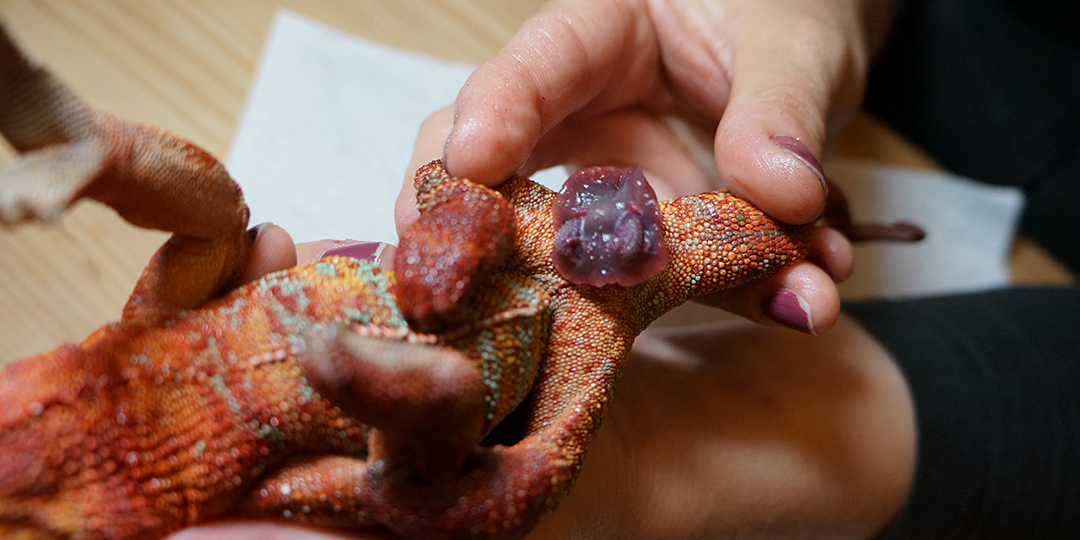Prolapse Podcast Episode Player
Description
Witnessing your first prolapse tends to be a traumatic event. You walk into your chameleon’s room and see a huge pink thing coming out of his or her cloaca. It appears that the chameleon’s insides are coming out. In prolapse this is actually what is happening!
Prolapse is when an internal structure is pushed out of the cloaca and is not able to be brought back in. This can be part of the intestines, the oviduct in females, or the hemipenes in males. There is some trauma that has caused the structure to rip and be pushed out. This can happen with either defecation or depositing eggs when there is a blockage and the chameleon pushes so hard against the blockage that the “tube” rips. Although this is not immediately life threatening you must get to a veterinarian who can reinsert the organs and take whatever measures are possible to decrease the chances of it happening again. Unfortunately, there is only so much a vet can do because there is no way to take the intestines off line to let them heal. The next days poop is coming through on schedule and waits for no man.
Note that there is a completely normal thing that males do and that is to expose their hemipenes. They will flex these ornate pink organs and then bring them back in. But they are out long enough for the owner to panic and be driving them to the emergency room. If the hemipenes are deliberately being aired out then this is nothing to worry about. But if the hemipenes do not go in on their own it becomes a life threatening situation.
Your task while waiting to get to the vet is to keep the prolapsed material moist and clean.
Symptoms
It is not difficult to identify prolapse. It is actually quite dramatic and panic inducing. A bright pink or reddish structure is protruding from the cloaca where only poop should be coming out.
The most difficult part about diagnosing prolapse is that males will also bring out and flex their hemipenes. It is difficult to tell whether the male is in life threatening distress or just showing off. In this regard, human males and chameleon males have a lot in common. Although not definitive, showing off often includes the hemipenes flexing and being drawn back when disturbed. A prolapsed hemipene hangs depressingly.
This Trioceros jacksonii has a hemipenal prolapse due to trauma on his tail. He was attacked by an animal and much of his tail had to be amputated. One hemipene prolapsed and would not be drawn back in. The vet reinserted the hemipene, but within 24 hours the hemipene prolapsed again. The hemipene had to be amputated. This chameleon has made a full recovery and is living a healthy life even without a tail or hemipenes.
Treatment
If you are confident in your abilities you can carefully work the prolapsed organs back into the cloaca using a Q-tip with Ky- Jelly on it. (Do not use petroleum jelly or anything with medication in it like Lidocaine.) This can help get the organ back in the body and this can, rarely, actually be the solution depending on how much damage there actually is. Cool water saturated with sugar can help decrease any swelling and enable easier reinsertion.
A veterinarian will be able to do this with professional tools and analysis. This is serious so a same day appointment or a visit to a veterinary emergency room is appropriate. In all case, call ahead and verify that the location 1) sees chameleons and 2) is familiar with prolapse.
Husbandry Correction
It is difficult to tell what causes prolapse. It can be anything from the chameleon being constipated from under heating or, supposedly, a big enough mass of parasites that it causes a blockage. (I need to check references on that one). There are a wide variety of causes and sometimes it remains unknown. But it is a wake up call to re-evaluate husbandry to determine if there is something off.






